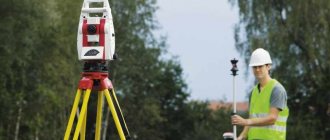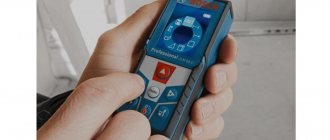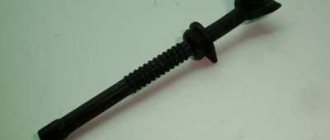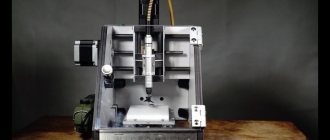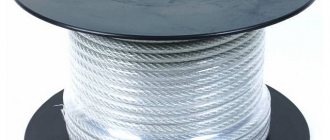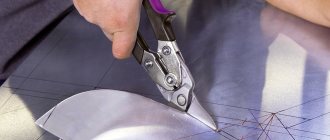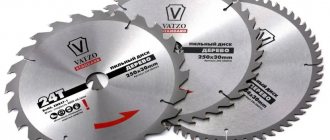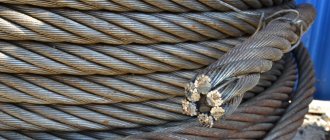As new technologies develop, they become an integral part of the life of an ordinary person. Their use allows you to increase the accuracy, speed and convenience of performing various tasks. In particular, this applies to laser rangefinders or laser tape measures, as such devices are often called in everyday life. However, the similarity between LD and conventional tape measures lies only in the ability to measure distance, and the former has more functions. Thus, the best laser rangefinders allow you to quickly take measurements over tens or even hundreds of meters of space. Moreover, the average error of such devices is only 2 mm, and even for simple consumer models it is not too lower.
Operating principle and comparison with ultrasonic tape measures
The main task of a laser rangefinder is to non-contactly measure distances to distant objects; By design, it is an electronic or electro-optical device. The internal structure tells you how the laser rangefinder works; The operating principle is based on the use of the phase shift effect.
Behind the physical term lies an essentially simple technology. The device has an emitter and a photodetector; When the performer presses the button, the following chain of actions occurs:
- The emitter sends a beam to the selected object.
- The beam is reflected from the surface and returns, hitting the photodetector.
- The signal returns with a delay, which is recorded by the instrument.
- The microprocessor compares the phases of the sent and returned signals. Phase is a characteristic of an electromagnetic pulse associated with the frequency of radiation; for the forward and reverse signals it shifts.
- The distance traveled by the beam is determined by the phase shift, and the result is displayed on the display.
Operating principle of laser rangefinders Source mebpilot.ru
This is how a rangefinder works, based on measuring the pulse shift of a laser beam. It is important to understand that, in addition to laser ones, there are tape measures that measure distances using ultrasound. Ultrasonic devices also create a light mark on an object using a laser LED, but this is the only similarity.
The ultrasound signal diverges in a cone, which introduces more errors into the measurements and reduces their accuracy. For example, if you measure the distance to a beam, the reflected signal will come not only from it, but also from the adjacent wall. The reflected signal from the wall will be strong, and this will distort the result. The fact that the speed and attenuation of sound waves is influenced by weather conditions also introduces its own errors.
A few years ago, instruments powered by ultrasound were widespread due to the fact that they cost significantly less than their laser counterparts; now the difference has practically disappeared. Due to low accuracy, they never became popular, although they have their advantages. For example, they are immune to bright light and are able to determine the distance to transparent planes.
Laser beam provides high measurement accuracy Source amazon.com
The best manufacturers of laser rangefinders
There are a lot of mediocre Chinese devices on the market. Therefore, the buyer needs to know which brands are worth considering. We can highlight the five best manufacturing companies:
- Makita . Japanese company founded in 1915. The company produces professional-level tools that are distinguished by a high price and the same quality.
- ADA . A young manufacturer that has only recently celebrated its tenth anniversary. The main advantages include a good combination of price and functionality. ADA Instruments devices are developed and manufactured in Asia, Europe and the USA.
- Bosch . One of the oldest European brands that is familiar to consumers all over the world. The company offers both professional and household devices.
- Control . A Russian brand that competes on equal terms with the largest manufacturers of laser rangefinders. Accurate measurements, attractive price and up to 3 years warranty.
- Leica . The average consumer knows this brand for its cameras. However, the company's specialization covers much more areas related to precision mechanics instruments and optical systems. The company also offers laser rangefinders that boast impressive accuracy.
Varieties and their applications
The question of how to choose a laser rangefinder is of interest to people who are faced with the variety of offers for the first time. You can cut off a significant part of them if you formulate the boundaries of use for yourself. According to this principle, laser roulettes are divided into two types:
- Household. The models are relatively cheap, but this does not affect the accuracy. They will help during renovations or construction. Additionally, they are equipped with a calculator for calculating the area, and a small memory for saving measurement results.
- Professional. Such instruments have an expanded range of functions, the ability to measure long distances (50-100 m or more), expanded memory, a high degree of protection from dust and moisture, and work with Bluetooth for data transfer. Many models are threaded and can be mounted on a tripod, increasing measurement accuracy.
Rangefinders have become indispensable assistants in various fields of activity; they are used in the following areas:
- Excavation work during construction and laying communications.
- Construction and finishing work, including marking of lumber.
Many models will help you calculate the amount of materials Source pirometr.com.ua
- Geodetic work, land surveying.
- Installation work during the construction of structures and communications.
- Design of premises and landscape, development of cabinet furniture.
- Applied tasks: hunting, navigation, control (inspection work), military affairs.
To solve design or land management problems, you need tools with a different set of parameters, and it is important to understand which of them are basic and which are secondary.
See also: Catalog of companies that specialize in the reconstruction and rebuilding of houses
Model DISTO D8 300008 from Leica
Another solid professional model, this time demonstrating standard performance for its segment. In particular, the measurement range is 100-200 m, and the error does not exceed 1 mm. The device can be operated in temperatures ranging from -10 to 50 °C, regardless of humidity level. In terms of additional functions, the Leica laser rangefinder also does not lag behind its competitors. Having a memory of 20 values, the device also allows you to calculate area, volume, addition and subtraction. There is also a trekking option. It allows you to make distance marks every 1-1.5 seconds while the tape measure is moving towards the target measuring point. A sound signal informs the user about the start or completion of individual operations, which is also important in working conditions on a construction site.
What you need to know about measuring range
The range of rangefinders varies from 10-20 to 60-200 m (in open areas). It may seem that the greater the “range” of the device, the better, but everything is not so simple.
The ability to take measurements over long distances is a plus, but you need to understand that as the measurement distance increases, the price of the device also increases. Therefore, the measurement range shows where it is more convenient to use one or another rangefinder, for example:
- For measurements in apartments and private houses, a 20 m laser tape measure is sufficient, capable of calculating the perimeter of the room and estimating the length of the wiring.
- If measurements are expected in large rooms or on a site, a device with a range of 40-50 m is suitable.
There are plenty of roulette possibilities in everyday life Source positronica.ru
- For working outdoors and at large facilities (warehouse, hangar), a 100 m device is useful.
Ratings of laser rangefinders regularly appear on specialized websites, but they do not always focus on the features of using long-range devices. The fact is that on the street the human eye ceases to distinguish the light guidance mark already from 15-20 m (and in bright sunshine from 10 m).
Therefore, if you plan to take measurements at 40 m or more, you cannot do without a tripod and a digital viewfinder with the ZOOM function. This will not only simplify measurements, but also increase their accuracy.
By the way, if measuring short distances is important for your work, then you need to pay attention not only to the maximum possible, but also to the minimum distance (it is also limited, for example, at least 50 cm). The signal transmitter and receiver in the rangefinder are separated by some distance; at a short distance the reflected beam will not be able to reach the receiver.
Using a tripod improves accuracy Source ebayimg.com
Device types
The entire segment can be divided into two categories representing household and professional appliances. They differ in performance characteristics, including the ability to work at high and extremely low temperatures, measurement range, etc. For example, models for home use provide a measurement range of 50-60 m. This applies to class leaders, since there are also 10-meter devices. In turn, professional laser rangefinders are capable of operating at distances of up to 250 m. Such distances are usually calculated when performing engineering and geodetic surveys in field conditions in an open area. It is worth noting another interesting type of electronic roulette. In this case we are talking about the laser principle of operation, but there are also ultrasonic devices with similar functionality. Such devices operate on the basis of a sound wave and estimate the distance by its reflection.
What you need to know about measurement error
The accuracy shows how accurate the instrument's readings are. Compared to ultrasonic models (with an error of 3-6 mm), laser analogues demonstrate better performance. It is important to know the following facts about measurement error:
- Accuracy (error) is indicated in two ways: +/- 0.5% or +/- 1 mm.
- The average error of household devices does not exceed 5-6 mm.
- Professional and semi-professional rangefinders have an error of 1-2 mm.
- There are highly specialized models for which high accuracy is not needed. For example, the error of hunting models can reach 1 m.
There is a concept of a reference point. Most models determine the distance starting from the rear end of the rangefinder. This system is convenient if you work indoors and measure the distance, for example, from wall to wall.
Some tools have multiple reference points, which expands their application possibilities. For example, if the reference point is the front end, this simplifies measurements on the external surfaces of the structure. When working with a tripod, the reference point becomes the tripod attachment point.
Choosing a reference point simplifies work in hard-to-reach places Source ivd.ru
Model XP1 1-4-079 from Condtrol
In terms of the combination of technical and operational qualities and cost, this is one of the best representatives of the class. The model belongs to professional devices, although it also incorporates the properties of household devices, in particular, it received a large display and an ergonomic interface. As for performance indicators, the Condtrol laser rangefinder-roulette in this version also provides, rather, the capabilities of a household appliance: 50 m measurement, an error of 1.5 mm and only one reference point. At the same time, the tool supports several operating modes for performing indirect mathematical and geometric calculations. On a construction site, its use is also justified due to its impact-resistant housing, which is provided with dust- and moisture-proof insulation.
Criterias of choice
It doesn’t matter whether you are looking for a model from a well-known manufacturer, or trying to purchase a budget analogue. When choosing, you will still be guided by the purpose for which the rangefinder is purchased, as well as the regularity of use. There is no need to purchase an expensive model if you do not plan to use it regularly.
Those who are planning to choose a laser tape measure should pay attention to the class of the laser, which directly affects the measurement distance. There are three classes:
- Class 2. They are found in rangefinders operating at distances up to 70 m. They are considered safe; a beam accidentally entering the eyes will not harm the retina.
- Class 2M. The beam power is higher, it works at medium distances and can damage the retina, but it makes it easier to take measurements outdoors, especially in cloudy weather.
- Class 3R. They work with rangefinders operating at 300-500 m and require the use of safety glasses.
Laser power affects the measurement range Source mosoblzhilservice.rf
Pulse or phase
The difference in measurement accuracy may be due to the mechanism used - phase and pulse rangefinders work slightly differently in this regard.
The former use a continuous harmonic wave as a meter, which improves the measurement accuracy, while the latter use only one frequency.
As a result, accuracy decreases, and the main advantage of pulse rangefinders is the ability to carry out reflectorless measurements.
From a mathematical point of view, using a phase rangefinder requires a lot of complex calculations, but it is beneficial where the main advantage is maximum accuracy.
Briefly about the main thing
Laser rangefinders are useful in solving a variety of application problems. The choice of a suitable model is made taking into account the scope and frequency of its use. This will determine which tool with what characteristics will be the best option.
The main characteristics of the device are range and measurement error. They are determined by the laser power; According to this parameter, laser devices are divided into three classes. Additional features may be useful for various purposes: number of reference points, ability to save results, tilt sensor, display backlight. The capabilities of standard household tools are sufficient for use indoors and on small plots of land.
Ratings 0
Additional functions
The presence of electronic filling in the device opens up a lot of third-party capabilities that can be implemented without affecting the main function of the instrument. Moreover, manufacturers strive to expand the basic options, linking add-ons with the main task of the user. For example, a multifunctional device can provide the operator with the ability to measure area, angle, volume of a room, etc. In addition, a laser range finder with a level and tape measure is equipped with functions for adding values. There are also built-in calculators for automatic work with calculated data. For the convenience of complex activities, the developers provide the models with charge level indicators and air temperature sensors.
comparison table
Based on the following table, it will be easier for the technician to choose a suitable laser rangefinder. It indicates the most significant technical characteristics of the previously discussed models.
| Model | Measuring range, m | Accuracy, mm | Number of reference points | Weight, g | Average price, rub. |
| Xiaomi Duka LS-P Laser Range Finder | 40 | 1 | n/a | 30 | 1 650 |
| RESANTA DL-40 | 2 | 3 | 115 | 2 690 | |
| ADA instruments COSMO MINI 40 | 2 | 120 | 3 490 | ||
| Condtrol SMART 60 | 60 | 1.5 | 83 | 3 490 | |
| SNDWAY SW-S50 | 50 | 4 | 330 | 3 809 | |
| BOSCH GLM 500 | 3 | 100 | 5 860 | ||
| RGK D100 | 100 | 2 | 4 | 180 | 5 990 |
| Makita LD050P | 40 | 2 | 100 | 6 890 | |
| DeWALT DW 03050 | 50 | 1.5 | 127 | 8 558 |
Execution
Tripod thread – allows you to evaluate the compatibility of a level or rangefinder with the user’s existing tripod. The most common tools are those with 1/4-inch threads (suitable for mounting on a photo tripod) and 5/8-inch threads (for heavy equipment).
Rotating base - makes it easier to point a vertical line to the required plane, without the operator having to move the level.
Display – displays information about the operation of the level or rangefinder, including measurement results and operating mode.
Some levels are equipped with a built-in tape measure.
Laser class
The class of a laser indicates its power and level of danger to the retina. The more powerful the laser, the greater the measuring range of the level or rangefinder. At the same time, the negative impact of the beam on the eyes increases.
There are three classes of laser that are used in a level or rangefinder:
- 1 – lowest power and safety for vision;
- 2 – balance of power and safety;
- 3 – high power and hazardous to vision.
The most common instruments that use a class 2 laser. Class 3 is for “advanced” and “long-range” devices (safety glasses are required for operation).

